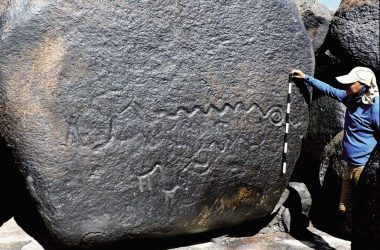Introduction
A recent study has revealed the ingredients used to embalm an ancient Egyptian noblewoman, shedding light on the mummification process and trade routes of ancient Egypt.
Unpacking the Secrets of Mummification
Using advanced analytical technology, researchers at the Max Planck Institute of Geoanthropology analyzed the chemical composition of balm residue found in jars that held the organs of Senetnay, an ancient Egyptian woman. This mummification balm is the most complex one found from that period in history.
The Scent of Eternity
The balm extracted from Senetnay’s organs had a sophisticated scent that researchers have dubbed “the scent of eternity.” It is a combination of pine-like woody scent, sweeter undertones of beeswax, and a strong smoky scent of bitumen.
Imported Ingredients
The analysis of the balm residue suggested that it contained tree resins from larch trees, pistachio trees, or dammar gum. These ingredients are not naturally found in Egypt, indicating that the ancient Egyptians were importing goods through extensive trade routes.
A Connected World
The discovery of these imported ingredients suggests a more connected world than previously thought. It raises questions about the equipment, skills, and ideas that traveled along these trade routes.
Unanswered Questions
The study leaves unanswered questions about the specific reasons for selecting these balms and whether different organs were mummified using different balms. It also highlights the lack of information about the ceremony conducted and the secrecy surrounding the embalming process.
Conclusion
This study provides valuable insights into the mummification process of ancient Egypt and the trade routes they relied on. It expands our understanding of this ancient civilization and raises further questions for future research.








